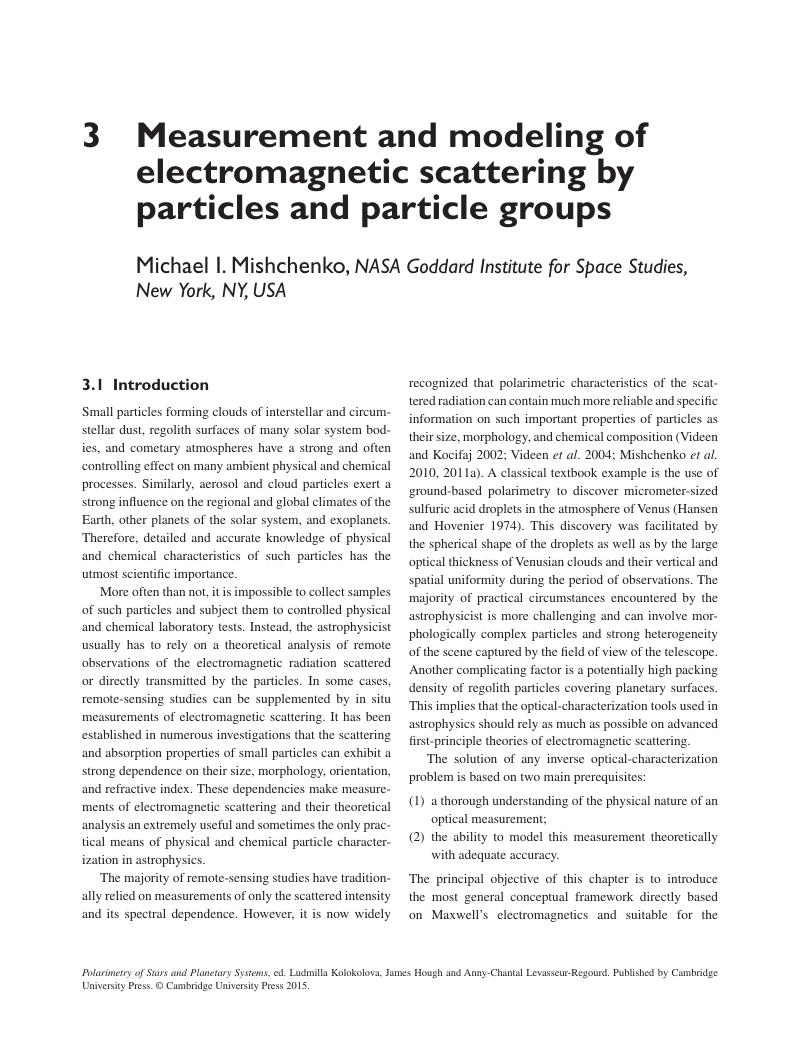Book contents
- Half title page
- Title page
- Copyright page
- Dedication
- Contents
- Contributors
- I Introduction
- II Theory, instrumentation, and laboratory studies
- 3 Measurement and modeling of electromagnetic scattering by particles and particle groups
- 4 Instrumentation
- 5 Laboratory studies
- 6 Grain alignment: Role of radiative torques and paramagnetic relaxation
- 7 Multiple scattering of light in particulate planetary media
- 8 Experimental scattering matrices of clouds of randomly oriented particles
- III Stars and their environment
- IV Solar system
- V Exoplanets and exobiology
- Book part
- Index
- References
3 - Measurement and modeling of electromagnetic scattering by particles and particle groups
from II - Theory, instrumentation, and laboratory studies
Published online by Cambridge University Press: 05 May 2015
- Half title page
- Title page
- Copyright page
- Dedication
- Contents
- Contributors
- I Introduction
- II Theory, instrumentation, and laboratory studies
- 3 Measurement and modeling of electromagnetic scattering by particles and particle groups
- 4 Instrumentation
- 5 Laboratory studies
- 6 Grain alignment: Role of radiative torques and paramagnetic relaxation
- 7 Multiple scattering of light in particulate planetary media
- 8 Experimental scattering matrices of clouds of randomly oriented particles
- III Stars and their environment
- IV Solar system
- V Exoplanets and exobiology
- Book part
- Index
- References
Summary

Information
- Type
- Chapter
- Information
- Polarimetry of Stars and Planetary Systems , pp. 13 - 34Publisher: Cambridge University PressPrint publication year: 2015
References
Accessibility standard: Unknown
Why this information is here
This section outlines the accessibility features of this content - including support for screen readers, full keyboard navigation and high-contrast display options. This may not be relevant for you.Accessibility Information
- 5
- Cited by
